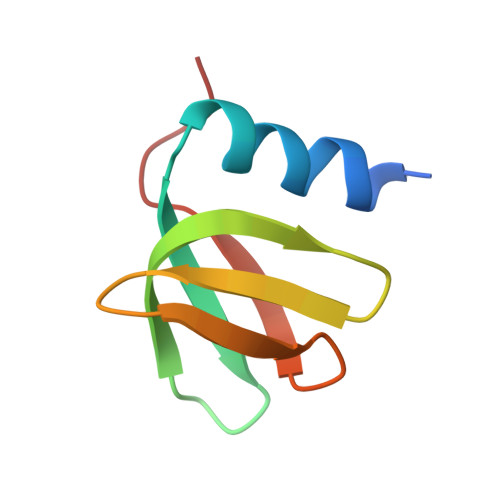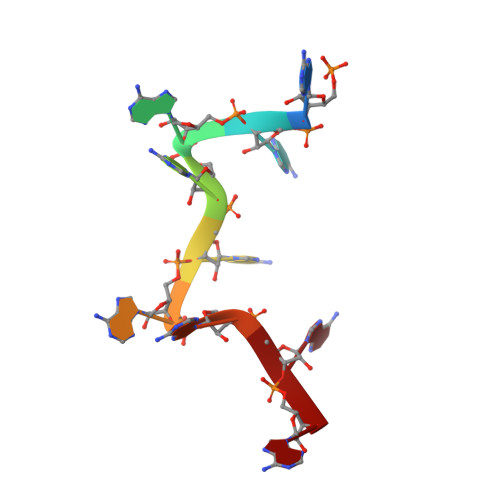Structure of Escherichia coli Hfq bound to polyriboadenylate RNA
Link, T.M., Valentin-Hansen, P., Brennan, R.G.(2009) Proc Natl Acad Sci U S A 106: 19292-19297
- PubMed: 19889981
- DOI: https://doi.org/10.1073/pnas.0908744106
- Primary Citation of Related Structures:
3GIB - PubMed Abstract:
Hfq is a small, highly abundant hexameric protein that is found in many bacteria and plays a critical role in mRNA expression and RNA stability. As an "RNA chaperone," Hfq binds AU-rich sequences and facilitates the trans annealing of small RNAs (sRNAs) to their target mRNAs, typically resulting in the down-regulation of gene expression. Hfq also plays a key role in bacterial RNA decay by binding tightly to polyadenylate [poly(A)] tracts. The structural mechanism by which Hfq recognizes and binds poly(A) is unknown. Here, we report the crystal structure of Escherichia coli Hfq bound to the poly(A) RNA, A(15). The structure reveals a unique RNA binding mechanism. Unlike uridine-containing sequences, which bind to the "proximal" face, the poly(A) tract binds to the "distal" face of Hfq using 6 tripartite binding motifs. Each motif consists of an adenosine specificity site (A site), which is effected by peptide backbone hydrogen bonds, a purine nucleotide selectivity site (R site), and a sequence-nondiscriminating RNA entrance/exit site (E site). The resulting implication that Hfq can bind poly(A-R-N) triplets, where R is a purine nucleotide and N is any nucleotide, was confirmed by binding studies. Indeed, Hfq bound to the oligoribonucleotides (AGG)(8), (AGC)(8), and the shorter (A-R-N)(4) sequence, AACAACAAGAAG, with nanomolar affinities. The abundance of (A-R-N)(4) and (A-R-N)(5) triplet repeats in the E. coli genome suggests additional RNA targets for Hfq. Further, the structure provides insight into Hfq-mediated sRNA-mRNA annealing and the role of Hfq in RNA decay.
Organizational Affiliation:
Department of Biochemistry and Molecular Biology, University of Texas, MD Anderson Cancer Center, Houston, TX 77030-4009, USA.
















